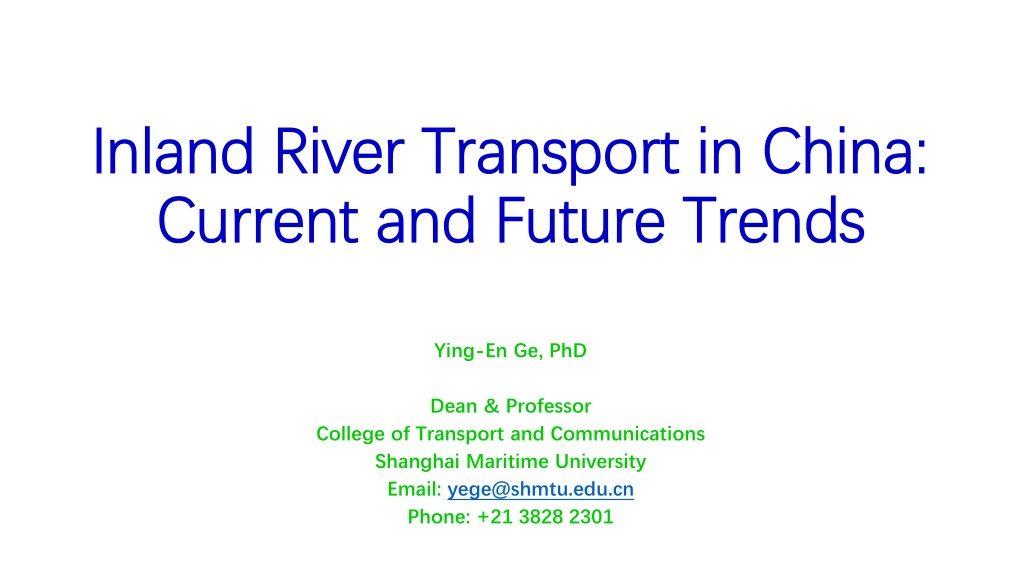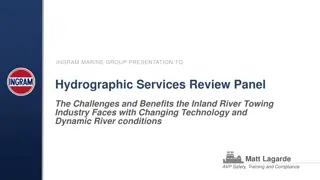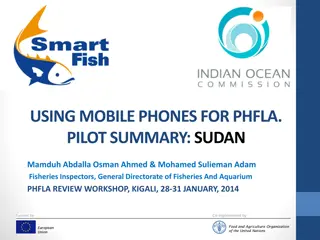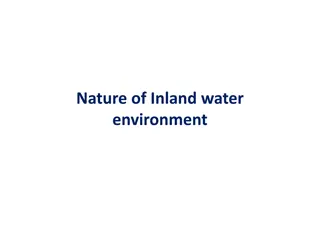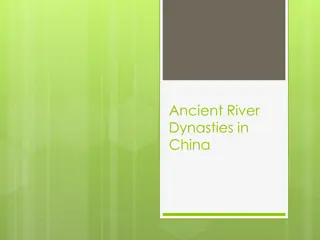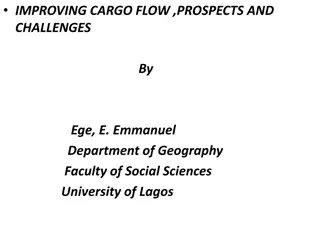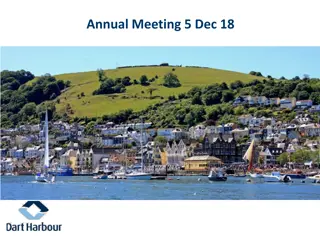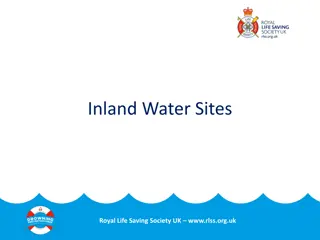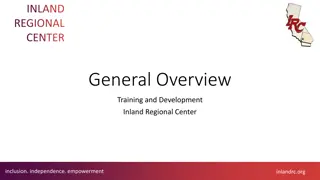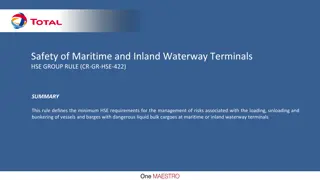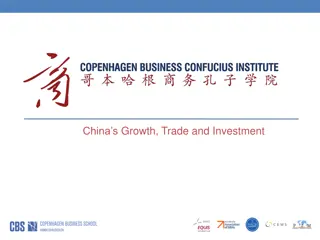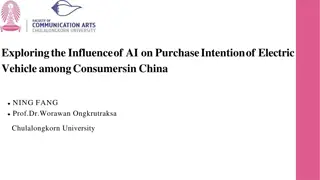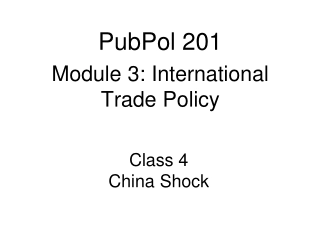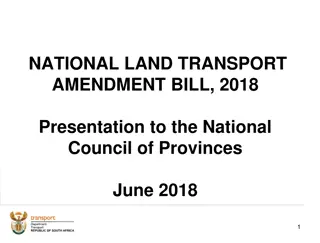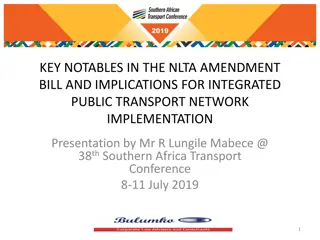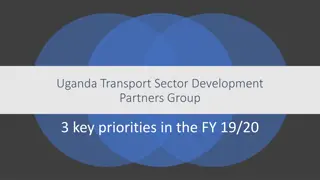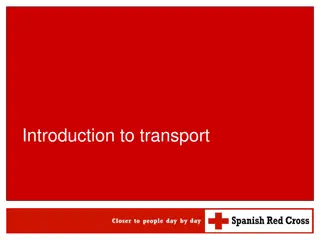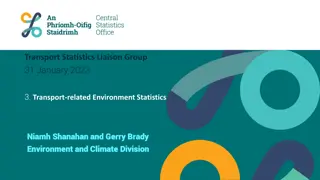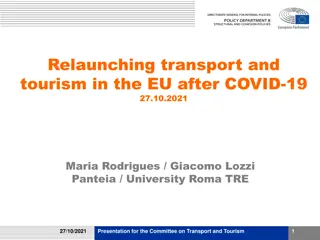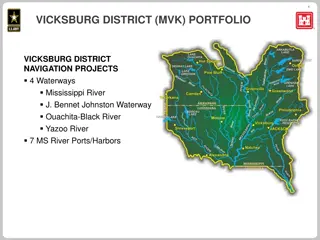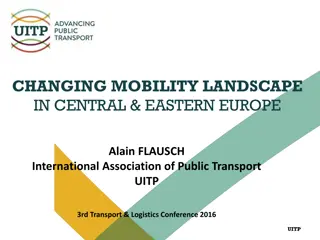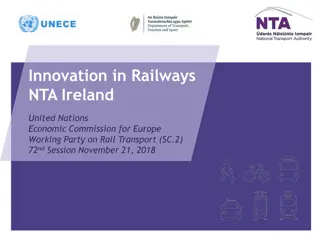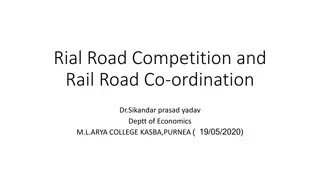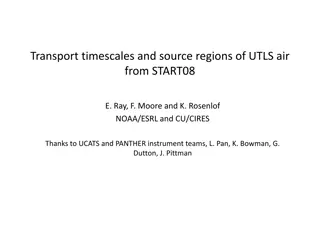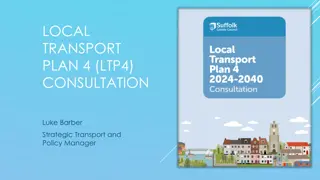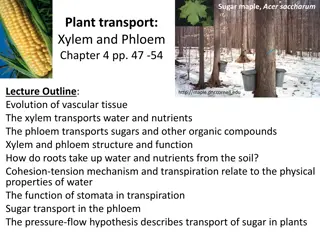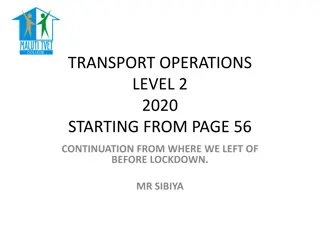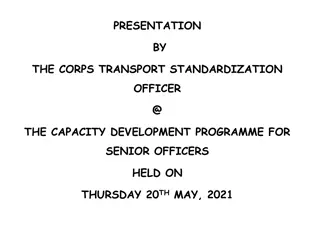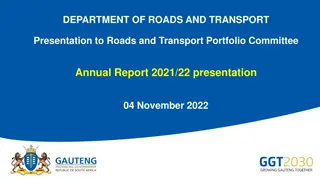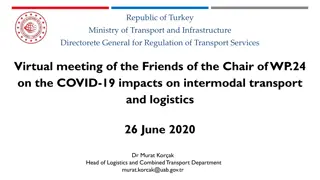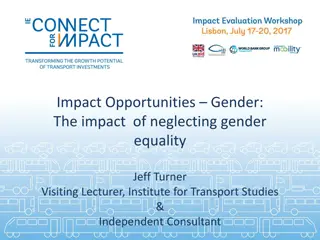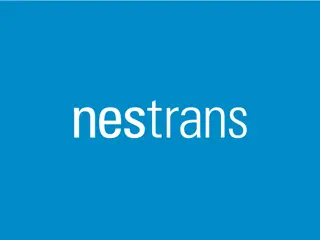Current and Future Trends in Inland River Transport in China
The article discusses the importance of river systems in China for economic development, highlighting the challenges and opportunities in promoting inland river transport. It covers the market share of water transport, investment trends, and provides recommendations for the future development of inland water transport in China.
Download Presentation

Please find below an Image/Link to download the presentation.
The content on the website is provided AS IS for your information and personal use only. It may not be sold, licensed, or shared on other websites without obtaining consent from the author. Download presentation by click this link. If you encounter any issues during the download, it is possible that the publisher has removed the file from their server.
E N D
Presentation Transcript
Inland River Transport in China: Inland River Transport in China: Current and Future Trends Current and Future Trends Ying-En Ge, PhD Dean & Professor College of Transport and Communications Shanghai Maritime University Email: yege@shmtu.edu.cn Phone: +21 3828 2301
Outline Outline Introduction The planned and (or) ongoing tasks Challenges or Constraints in Promoting Inland River Transport in China Recommendations for development of Inland Water Transport in China Concluding Remarks
Introduction Introduction I. I. River Systems in China River Systems in China In China, there are 5,800 natural rivers and about 900 lakes. The three longest rivers in the PRC are the Yangtze (6,300 km), Yellow (5,464 km), and Lancang (4,350 km) rivers. The rivers provide huge support for the economic development of the area along them. The total gross domestic product (GDP) of the seven provinces and two cities the Yangtze River corridor covers takes up about 40% of the GDP of China.
Introduction Introduction I. River Systems in China (Cont.) I. River Systems in China (Cont.)
Introduction Introduction II. Market Share II. Market Share In terms of freight, waterway transport accounted for 51% of the total freight turnover in 2014, while highways was 34%, and railways, 15%.
Introduction Introduction II. Market Share (Cont.) II. Market Share (Cont.) In 2014, among the waterway transport freight turnover, Ocean: 60%; Coastal: 26%; Inland waterway: 14%
Introduction Introduction II. Market Share (Cont.) II. Market Share (Cont.) In 2014, river ports handled 3.5 billion tons of cargo. About 51% of all cargo through the river ports is mineral building materials (31%) and coal & coal products (20%). Container shipping is slowly gaining importance.
Introduction Introduction II. Investment II. Investment Investment in water transport has not been commensurate with its contribution to the freight transport. Roads: 62% Railways: 32%; and Waterways: 6%.
Introduction Introduction III. Inland River Transport Management Structure in China III. Inland River Transport Management Structure in China The Ministry of Transport (MOT) has the overall responsibility for policy and administration of inland waterways. The MOT has decentralized responsibility for day-to-day administration and management of the main waterways of national importance to the Changjiang River Administration of Navigational Affairs and Pearl River Administration of Navigational Affairs.
Introduction Introduction III. Inland River Transport Management Structure in China (Cont.) III. Inland River Transport Management Structure in China (Cont.) Provincial governments are responsible for most other waterways, and indeed for most of the total network, which they administer through provincial departments of transport. Provincial water transport administration bureaus are usually established under provincial departments of transport. The provincial authorities are required to submit annual reports to the MOT.
The planned and (or) ongoing tasks The planned and (or) ongoing tasks I. Inland river Transport Development goals and tasks I. Inland river Transport Development goals and tasks China has adopted a National Plan for Inland Waterways and Ports with a planning horizon from 2007 to 2020. The plan details improvements to each of the main (Inland Water Transport (IWT) systems in China (those based in the Yangtze River, Pearl River, Grand Canal and Huaihe River, Heilongjiang and Songliao Rivers, and the Minjiang River).
The planned and (or) ongoing tasks The planned and (or) ongoing tasks I. Inland River Transport Development goals and tasks (Cont.) I. Inland River Transport Development goals and tasks (Cont.) The plan acknowledged the importance of supporting policies which (i) seek a stable long-term financing model and external sources of finance; (ii) enhance cooperation with other relevant departments in the areas of shipping services, power supply, flood control, irrigation, and water supply; (iii) enhance the planning of ports; (iv) strengthen measures to standardize and modernize vessel fleets; (v) increase & improve applications of IT to inland river transport management; (vi) ensure safety and environmental performance; and attain a sustainable development of the system.
The planned and (or) ongoing tasks The planned and (or) ongoing tasks I. Inland River Transport Development goals and tasks (Cont.) I. Inland River Transport Development goals and tasks (Cont.) In February 2006, the MOT published the National Outline for the Development of Ship-Class Standardization on Inland Waterways , which requires: Provincial transport authorities develop the navigation industry by relying on technological innovations and progress.
The planned and (or) ongoing tasks The planned and (or) ongoing tasks I. Inland River Transport Development goals and tasks (Cont.) I. Inland River Transport Development goals and tasks (Cont.) In January 2011, the State Council issued Opinions on Accelerating the Development of Water Transport on the Yangtze River , which requires governments at all levels shall be devoted to integrating water transport with other modes of transport involving highways, railways, aviation, and pipelines, developing multimodal transport; and strengthening comparative advantages and combination efficiency of various transportation means. It acknowledges that the fast economic and social development, resource and environment constraints are becoming increasingly stringent and that the contradiction between transport development, energy conservation, and environment protection has become increasingly acute. mic development.
The planned and (or) ongoing tasks The planned and (or) ongoing tasks I. Inland River Transport Development goals and tasks (Cont.) I. Inland River Transport Development goals and tasks (Cont.) In May 2013, the Ministry of Transport issued the Guiding Opinions on Promoting the Development of Green, Recycling-Oriented, and Low-Carbon Transportation. The Opinions mandated provincial transport authorities to (i) strengthen technological research and development on green, recycling-oriented, and low-carbon transportation; (ii) promote scientific and technological breakthroughs including R&D and application of key technology for intelligent transportation, and the research and demonstration of the key technology for emergency response to transportation pollution and pollution control.
The planned and (or) ongoing tasks The planned and (or) ongoing tasks I. Inland River Transport Development goals and tasks (Cont.) I. Inland River Transport Development goals and tasks (Cont.) In August 2013, MOT issued the Notice on Issuing the Action Programs (Year 2013 2020) on Accelerating the Development of Water Transport on the Yangtze River and Other Inland Waters, in which Governments were required to strengthen planning and construction of inland waterways which connect with coastal ports. Furthermore, governments at alllevels shall make efforts to (i) speed up development of large-scale port areas for special purpose at major ports and part of the key ports along inland rivers, especially terminals for handling containers, automobile ro-ro handling, and bulk commodities; and (ii) develop multimodal transport and port logistics.
The planned and (or) ongoing tasks The planned and (or) ongoing tasks I. Inland River Transport Development goals and tasks (Cont.) I. Inland River Transport Development goals and tasks (Cont.) In April 2014, the Ministry of Finance and the MOT promulgated the Management Measures for Subsidy on Ship-Class Standardization on Inland Waters. The policy encourages cargo vessel replacement by providing subsidies. It also provides subsidies for vessels to install sewage cabin.
Constraints in Promoting Inland River Transport in China Constraints in Promoting Inland River Transport in China 1) Market Constraints: Unbalanced cargo flows caused by the disparity in economic development; Penetration because of geographical and topographical situation; and Sophisticated and expensive organization of intermodal inland waterway transport.
Constraints in Promoting Inland River Transport in China Constraints in Promoting Inland River Transport in China 2) Funding Constraints: Disproportionate public financing of Inland Water Transport; and Restricted access to commercial bank loans.
Constraints in Promoting Inland River Transport in China Constraints in Promoting Inland River Transport in China 3) Inadequate inland ports and logistics system: An inherent disadvantage of IWT is the need for double handling. Inland ports play an important role in facilitating supply chain flows through efficient logistics. Interfaces with other transport modes, such as roads and railways, are crucial to overcome the disadvantage. There is evidence that the inland ports in China are not rationally developed and that port administration is cumbersome. The transport system is organized by transport mode, and no single mode is focused on creating multimodal chains and seamless transfers at nodes that are needed to lower transport costs.
Constraints in Promoting Inland River Transport in China Constraints in Promoting Inland River Transport in China 4) Information Constraints: Communication channels among shipping lines, forwarders, and government are few. There is no institutionalized communication among these IWT stakeholders. Many shippers are not aware of the ability and opportunities coming out of the IWT system.
Constraints in Promoting Inland River Transport in China Constraints in Promoting Inland River Transport in China 5) Technical Constraints: Limited water depth in the dry season; Long waiting time at locks; and The lack of port facilities hinder shippers in using Inland Waterway Transport.
Constraints in Promoting Inland River Transport in China Constraints in Promoting Inland River Transport in China 6) Regulatory Constraints: Many government offices are involved in IWT management, but integrated transport planning to minimize logistics costs and law enforcement capability is weak. The many policy directives to encourage IWT development focus on promotion of infrastructure hardware and give little consideration to market players such as shippers or forwarders, policy instruments, implementation arrangements, and financial support.
Recommendations for development of Inland Water Recommendations for development of Inland Water Transport in China Transport in China a) Reducing economic disparity within provinces, and coordinating planning and development of transport and land use; b) Promoting integrated transport planning and intermodality; c) Developing inland ports; d) Improving customer service; e) Directing inland waterway transport incentive programs toward market players; f) Managing the relationship between government and state-owned enterprises; and g) Enhancing stakeholder participation.
Concluding remarks Concluding remarks Safety Efficiency Environment Cost, Revenue, Profit, etc.
Concluding remarks Concluding remarks Safety Efficiency Environment
Thanks for your attention Thanks for your attention Q & A Q & A
